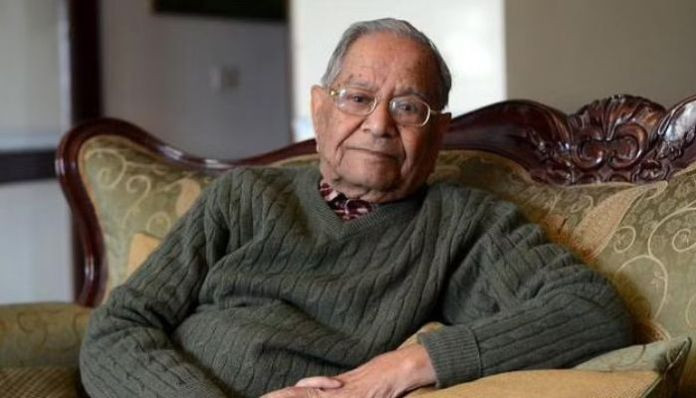 New Delhi – Former Director-General of the Archaeological Survey of India and a Senior Archaeologist Prof. Lal passed away on 10th September at the age of 101. (Besides matter on him in the Editorial, read some more on his work ahead.)
New Delhi – Former Director-General of the Archaeological Survey of India and a Senior Archaeologist Prof. Lal passed away on 10th September at the age of 101. (Besides matter on him in the Editorial, read some more on his work ahead.)
In the passing of Prof BB Lal Ji, we have lost one of the brightest minds who has contributed significantly towards our archeological excavations & endeavours and trained archeologists for over 4 decades.
My thoughts and prayers are with the bereaved family.
Om Shanti. pic.twitter.com/sZlvBCMCLq
— G Kishan Reddy (@kishanreddybjp) September 10, 2022
Between 1950 and 1952, Prof. Lal excavated a number of sites associated with the Mahabharat. Consequently, he discovered a number of Painted Grey Ware sites in the Indo-Gangetic divide and upper Yamuna-Ganga Doab. In a paper he wrote about 20 years later in 1975 titled, ‘In search of India’s traditional past : Light from the excavations at Hastinapura and Ayodhya’, he summarised his findings as ‘the available archaeological evidence tends to indicate there did exist a basis for the Mahabharat, which no doubt got immensely inflated during the course of time’.
In his 2008 book titled, ‘Rama, His Historicity, Mandir and Setu : Evidence of Literature, Archaeology and Other Sciences,’ he wrote, “Attached to the piers of the Babri Masjid, there were twelve stone pillars, which carried not only typical Hindu motifs and mouldings, but also figures of Hindu Deities. It was self-evident that these pillars were not an integral part of the mosque, but were foreign to it”.
His theory of the temple-like pillars was recognised as the interpretive framework of the Court appointed excavation team in 2002.
Prof. Lal also served on various UNESCO Committees.
If archaeologists follow Prof. Lal’s advice, the world will see the glorious heritage and developed Hindu culture again !

 The Delhi government earned ₹568 crore in tax revenue during the financial year 2024-25
The Delhi government earned ₹568 crore in tax revenue during the financial year 2024-25 Two-year imprisonment for three accused who grabbed 150 gunthas of land belonging to Sardar Patel in Gujarat
Two-year imprisonment for three accused who grabbed 150 gunthas of land belonging to Sardar Patel in Gujarat Saudi Arabian flag hoisted in the Kondhwa area of Pune
Saudi Arabian flag hoisted in the Kondhwa area of Pune Europe Faces War Crisis Due to Russia’s Aggression
Europe Faces War Crisis Due to Russia’s Aggression Abhigya Anand, a 20-year-old astrologer had predicted the earthquake in Myanmar and Thailand 3 weeks ago.
Abhigya Anand, a 20-year-old astrologer had predicted the earthquake in Myanmar and Thailand 3 weeks ago. The Damoh municipality (Madhya Pradesh) removed the saffron flags put upon the occasion of Shriram Navami and Chaitra Navratri
The Damoh municipality (Madhya Pradesh) removed the saffron flags put upon the occasion of Shriram Navami and Chaitra Navratri